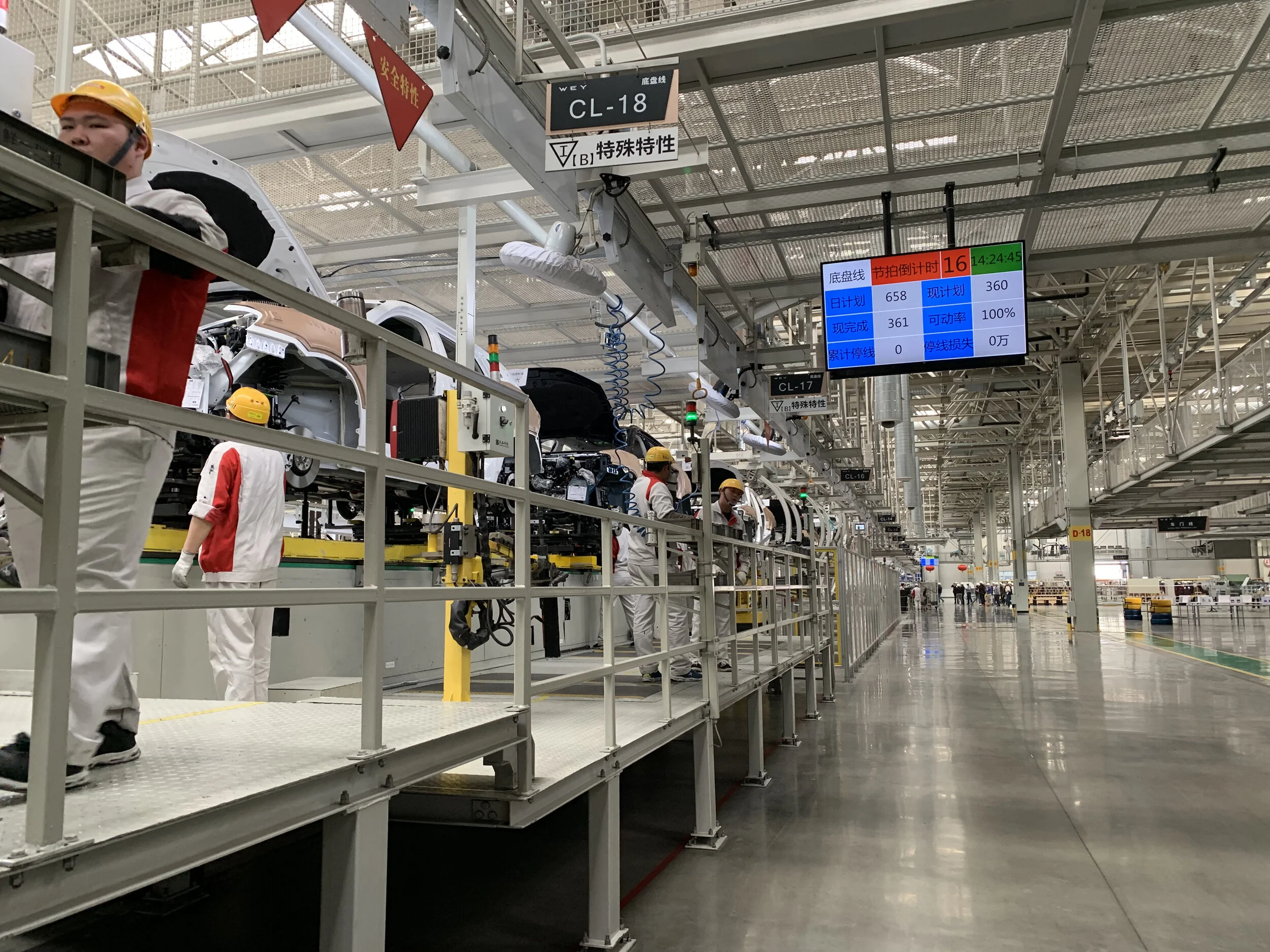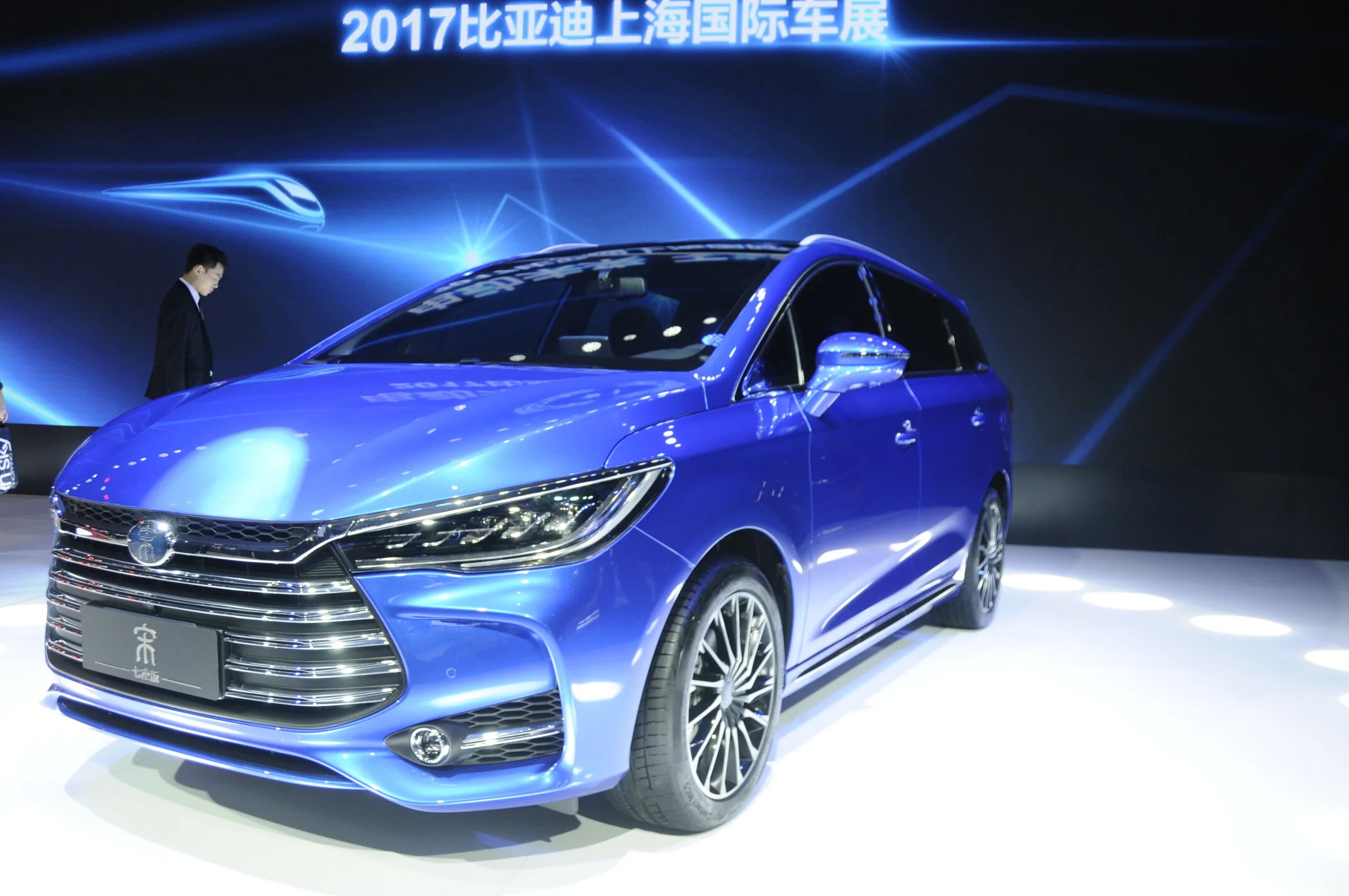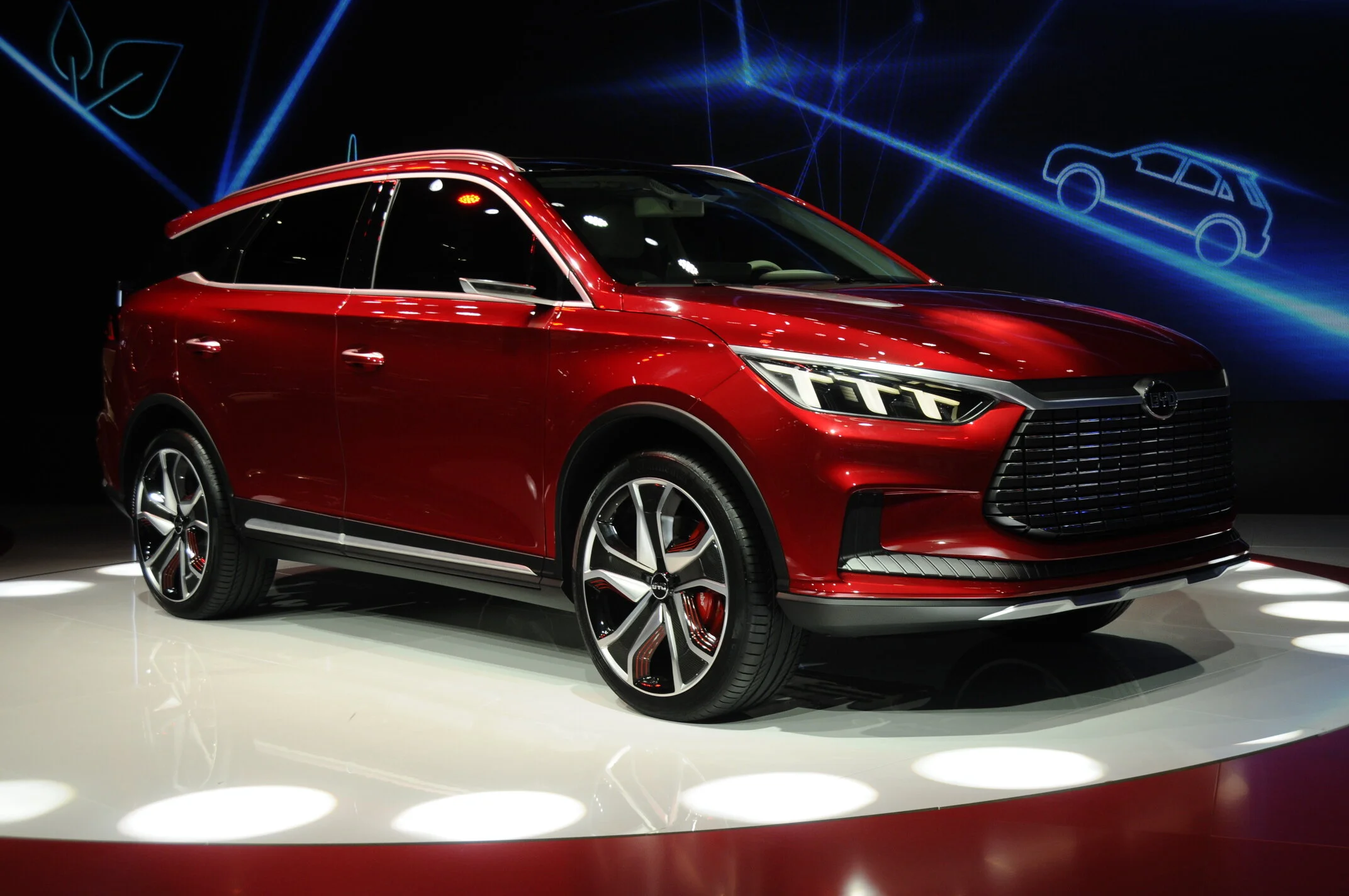And the nominees are ….
/Talk is that Government might be considering accelerating electric vehicle ownership by directly involving in their sale, potentially in partnership with a Chinese brand. Three names are being bandied around – here’s what each is about.
China is now the world’s largest car market - and it also leads in production and buy-up of electric vehicles.
COULD be just a cheeky rumour, could be something so much more..?
Either way, the nation’s motor vehicle distributors have taken seriously talk that the Government intends to gazump them in the sale of electric vehicles, with a plan that – so it’s said – will see the administration cosy up with a yet-to-show Chinese player for a direct pitch plan than would deliver truly cheap brand-new EVs to the general populace. (https://www.motoringnz.com/news/2021/5/27/radical-ev-push-talk-alarms-industry).
A quick-fix realisation of hope to get the motoring public out of fossil-fuelled cars and into latest generation electrics. No more Co2 concerns, no more reliance on Big Oil. No more old bangers.
The three brands that are cited in conversation are BYD – whose arrival here is already cemented - Nio and Xpeng.
The latter two do not appear to have established any formal distribution arrangements for this market. Nor do they seem to match BYD in producing models that could genuinely be considered entirely mainstream and budget-priced, though they definitely would deliver for technology advancement and design flair.
Why China? Pretty obvious really. With mainstream consumer acceptance and government support, China’s EV sector is booming; not only is the world leader by huge margin for battery-compelled car sales – hence why Tesla has a factory there – but more are built there than anywhere else in the world.
It’s also home ground to some of the biggest players in battery development and production. Plus it has ability to create cars for cheaper than any other major production country anywhere.
China has more than 100 car brands and, due to Government edict, all are compelled to deliver at least one EV in their line-ups; that’s the political cure-all for a massive air pollution problem.
The vast majority are built purely for domestic consumption, and that’s quite enough: China’s domestic car market has been the world’s largest since 2008.
The following year annual production of vehicles in China exceeded that of the European Union, the United States and Japan combined.
The total volume of car sales there reached 25 million units in 2019, around 21 million units out of which were passenger. The market has dipped since then, but seems back into recovery mode.
Three out of five new cars sold in China will be electric by 2030. That means around 18 million EVs and a market size of $360 billion.
Some of the largest, most profitable and best-funded performers have been exporting for some time. The reason we haven’t seen more already?
Two reasons. First, in creating Chinese cars for Chinese ownership, brands can steer clear of having to meet international quality and safety requirements. We’ve seen plenty of examples in the past where some product has spectacularly come unstuck in the NCAP crash testing regime that New Zealand has accepted as its sole barometer.
Also, China is a left-hand-drive country; so logically those with global ambition have tended to target countries that accept their product in this format: No issue, cos they’re plum markets. Though few makers produce for right-hand-drive, the big guns are starting to do so now.
Anyway, here’s something about the background and talent of those marques (statistics from SupChina.com and are for 2020).
BYD’s Song seems to be set for availability here.
BYD
Units shipped: 130,970
Revenues: 153.5 billion yuan / $US23.4 billion
Number of models: 5
Number of factories: 13
Number of employees: 229,154 (2020)
Primary industry: Electric vehicles
Primary industry of parent: IT, rechargeable batteries, handset electronics, energy storage, electric bikes, urban rail transit systems
EV-related affiliates: Toyota, Didi, FAW
BYD Auto, or Build Your Dreams, is the EV subsidiary of Chinese multinational BYD Company.
Founded in 1995, BYD began as a rechargeable battery business in the IT sector before branching into handset electronics, and then cars, including EVs.
The company is now moving into other businesses, including renewable energy power plants, LEDs, and urban rail transit systems.
In the span of a decade, BYD became the largest Chinese battery manufacturer, capturing half the world’s mobile-phone battery market.
Its EV unit was born in 2002 from an acquisition of Tsinchuan Automobile, then the sixth-largest car manufacturer in China by sales volume. Aside from its own EVs, BYD also supplies other EV manufacturers, one being state-owned FAW Group.
Warren Buffett’s Berkshire Hathaway owns eight percent of BYD. In April 2020, BYD and Toyota Motors announced a joint partnership in a new company — BYD Toyota EV Technology — that will research and manufacture EVs for the Chinese market.
In February BYD signalled it had signed an agreement to sell fully electric cars here and in Australia. The regional distributor is Nexport, a subsidiary of Australian-owned renewable energy investment firm TrueGreen.
Another model in the BYD portfolio is the Dynasty.
Nexport’s involvement with BYD is extensive. It plans to build a $700 million factory in New South Wales, to assemble BYD buses and eventually cars and also an electric utility that is already at a prototype stage.
Intent is to sell EVs in an online-only capacity in order to cut costs and help achieve price parity with combustion-engined cars of similar size and performance.
Nexport chief executive Luke Todd says his business strategy is to “deliver high quality electric vehicles from the manufacturer direct to the customer.”
"The dealership network model is broken when it comes to electric vehicles. Under our model, we will be reducing the price to consumers by as much as 30 percent," he has told media in Australia.
Nexport has indicate that its products will likely include a medium SUV, a medium-sized sports sedan and a small city-centric hatchback that it revealed recently.
Of the three brands mentioned here, only BYD appears to have models that could be considered budget cars.
Nio has invented a way to boost its cars from empty to 100 percent charged in under 10 minutes using swappable batteries.
NIO
Units shipped: 43,728
Revenues: 16.25 billion yuan / $2.5 billion
Number of models: 5
Number of factories: 1
Number of employees: 7,000+ (2020)
Primary industry: Electric vehicles
EV-related affiliates: Tencent, Baidu
Nio was founded in 2014 under the name ‘NextEV’.
Its first car? You couldn’t miss it: A quad-motor supercar called the EP9. Its four motors produce a total of 1000kW – not far off what you get in a Bugatti Chiron. It could do 0-100kmh in just 2.7 seconds.
Nio has also produced an electric formula race car, but is also hitting the mainstream with the ES8, ES6, EC6, ET7 and EP9 road cars which tailor more or less as China’s home-grown equivalents of Tesla cars.
The ET7 and EP9 have made headlines; the first by virtue of having an advanced driver assistance system, known as NIO Pilot, that is similar in ability to Tesla’s AutoPilot.
The EP9’s ace card is to do with recharging. In a normal EV, the batteries are fixed within the car, and you have to recharge them when they go flat, which takes time.
Nio has invented a way to boost its cars from empty to 100 percent charged in under 10 minutes using swappable batteries. When you’re running low, you can just drive to a special Nio garage and swap your flat battery for a fully charged one in around three minutes.
Nio says its battery-swapping service isn’t very expensive. Each car comes with free battery swapping for the first owner, and second-hand buyers just pay for the energy they use.
Another clever thing: You don’t HAVE to swap the battery – you can still plug your car into a normal public charging point if you want to.
The ET7 has an advanced driver assistance system, known as NIO Pilot, that is similar in ability to Tesla’s AutoPilot.
Also, customers in China – where Nio will have 500 swap stations stations up and running 9n 76 cities by the end of this year - get access to a fleet of rescue vans with built-in chargers. These will come out and help you if you run out of charge in the middle of nowhere.
Having swappable batteries is that Nio can make its cars much cheaper by selling the batteries separately. In a recent feature, British website carwow.co.uk noted that China market buyers can secure a new car with a battery, or you choose to pay around $15,000 less and rent the battery from Nio, at a cost of $210 per month.
This means Nio can make its cars cheaper – well, within reason. The ES6 SUV, basically their take on a Tesla Model Y, costs around $78,000, in its home market, but if anyone choosing to rent the battery, achieves a $15,000 discount.
Nio says the ES6 can top 580km on a charge, but that comes from the NEDC range test that has been dropped in Europe (and is not longer valid here) on grounds on being a bit ‘optimistic’.
Nio has been through some rough times. A little more than a year after the company’s initial public offering (IPO) in 2018, it began running out of cash and its stock plummeted. There’s been talk of it getting a $1 billion-dollar bailout from sources unknown, but it is still burning through money and has yet to make a profit.
The Xpeng P5 won plenty of attention on release last year.
Xpeng
Units shipped: 27,041
Revenues: $895.7 million
Number of models: 3
Number of factories: 1
Number of employees: 3676
Primary industry: Electric vehicles
EV-related affiliates: Alibaba, JD, Xiaomi
Founded just six years ago by a former Alibaba executive, Xpeng is headquartered in Guangzhou.
The senior executive team consists of former employees of Guangzhou Auto, a top Chinese manufacturer, Ford, BMW and Tesla.
Xpeng has drawn its employees from many well-known tech giants, including Xiaomi, Tencent, Samsung, and Huawei.
Xpeng aims to establish leadership in smart car technologies; ultimately in the autonomous driving sphere. It is among a handful of car brands making its own semiconductors. It also sees itself as a Tesla rival and, in fact, has been in a legal battle with Elon Musk’s brand over driver-aid technology.
Xpeng’s first electric car, a small model called the G3, only came out in 2018. It’s second, the P7 sedan, went on sale in China just on a year ago, and now it is set to roll out a third, the P5.
The P7 will hardly help mend any bridges with Tesla. It has attracted considerable interest because it bears – cough – ‘considerable’ resemblance to the size, packaging, and features of the Tesla Model 3, the single highest-selling EV in the world. This has been noted by media testers in the United States, where the brand has brought cars for evaluation, but not sale, though that does seem to be the eventual aim.
The P5 stands out as being the first production car in the world with a built-in lidar sensor. According to Xpeng, they are able to distinguish between pedestrians, cyclists and scooters, static obstacles, and road works, including in tunnels and during night driving and poor weather. Many believe lidar is an important feature for creating a safe autonomous experience.
Xpeng definitely sees itself doing well with drivers who don’t want to be … well, drivers. It recently ran a 3000 km navigation-assisted autonomous driving expedition, touted as China’s longest real highway autonomous driving challenge by mass-produced vehicles, in which a group of P7s drove the 3600kms from Guangzhou to Beijing on highways, with 2930km clocked under the control of its NGP (Navigation Guided Pilot) system. So, an average of 0.71 human driver interventions per 100km. It claims this as a new benchmark for long-distance autonomous driving by mass production passenger vehicles.






















